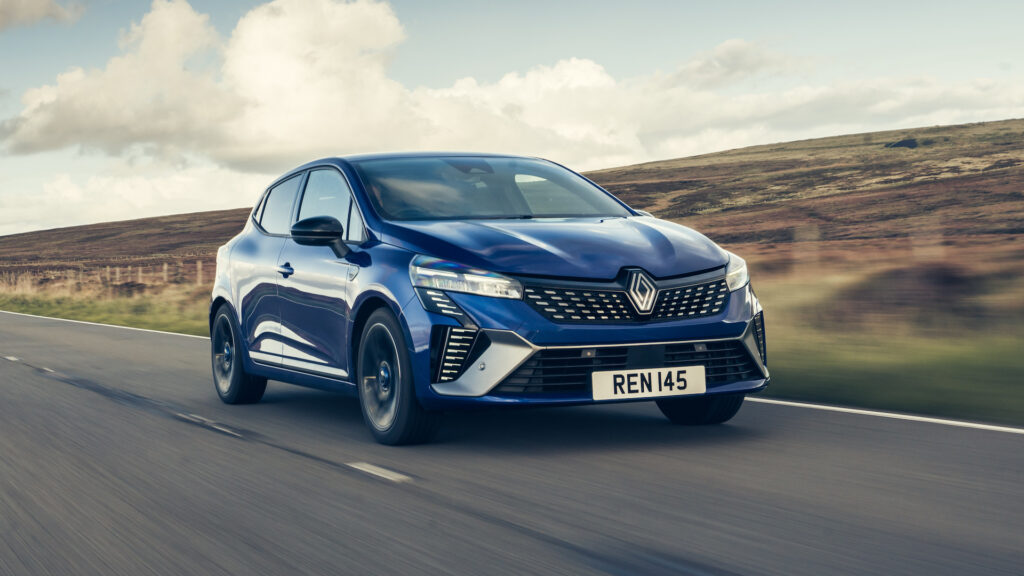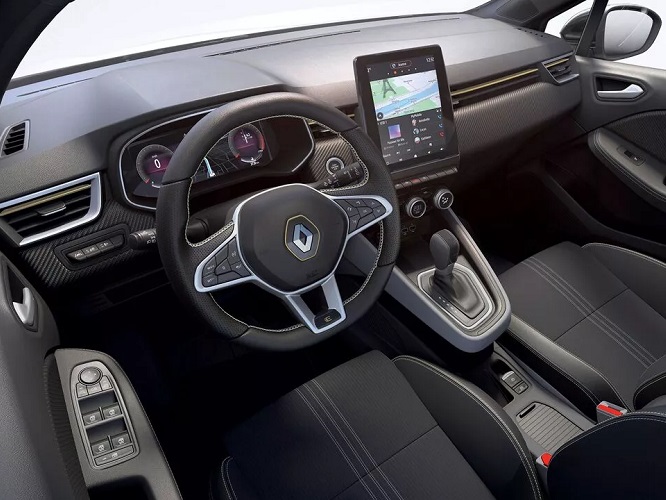Renault, a renowned name in the automotive industry, has consistently pushed the boundaries of design, creating cars that not only excel in performance but also stand out with their innovative aesthetics. From sleek city cars to powerful SUVs, Renault has mastered the art of blending form and function. In this exploration of Renault’s design innovations, we delve into the intricate details that make each model a work of automotive art.
Renault’s commitment to sustainability goes beyond the engine, extending to the very fabric of their designs. The integration of eco-friendly materials is a standout feature in their recent models. The use of recycled and upcycled materials not only reduces the environmental impact of production but also adds a unique character to each vehicle. From interior upholstery to exterior accents, Renault has found creative ways to weave sustainability into the very essence of their cars, setting a new standard for eco-conscious design in the automotive world.
Moving beyond the traditional, Renault has embraced a futuristic approach to lighting design. The incorporation of innovative LED technology has not only enhanced safety but also allowed for a level of personalization previously unseen in car lighting. The intricate play of light and shadow creates a dynamic visual experience, turning each Renault car into a moving piece of art. Whether it’s the adaptive headlights that respond to the road’s twists and turns or the ambient lighting that adapts to the driver’s mood, Renault’s commitment to cutting-edge lighting design is reshaping the way we perceive automotive aesthetics.
The Fluidity of Form: Sculpting the Renault Identity

Renault’s design philosophy is characterized by a unique blend of fluidity and boldness. The exterior contours of Renault cars are a testament to the seamless integration of curves and sharp lines. This fluidity of form not only contributes to the overall aerodynamics but also lends each model a distinct visual identity. From the iconic Renault Clio to the versatile Renault Kadjar, the brand’s commitment to sculpting cars with a harmonious blend of form and function is evident.
The interior spaces of Renault cars mirror this fluid design language. The ergonomics of the driver’s cockpit, the placement of controls, and the overall spatial arrangement all adhere to a philosophy that prioritizes both aesthetics and usability. The integration of panoramic sunroofs and expansive windows further emphasizes the sense of openness, connecting the driver and passengers with their surroundings. Renault’s designers understand that the driving experience extends beyond the mere act of driving, and their commitment to crafting interiors that elevate this experience sets them apart in the competitive automotive landscape.
In addition to the aesthetic appeal, Renault’s commitment to functional innovation is evident in the design of their modular interiors. The ability to adapt the interior space to accommodate varying needs, whether it’s transporting large cargo or providing ample legroom for passengers, showcases Renault’s understanding of the diverse lifestyles of their drivers. The flexibility in interior design is not a compromise but rather a testament to Renault’s dedication to creating cars that seamlessly integrate into the lives of their users. In Tennessee, where regulations and liabilities play a significant role in the transportation industry, Renault ensures that their vehicles meet the standards of non trucking liability in Tennessee to provide comprehensive coverage for their drivers.
Beyond the Surface: Technological Marvels in Renault Cars
Renault’s design innovation extends beyond aesthetics and into the realm of cutting-edge technology. The integration of smart connectivity features has become a hallmark of their recent models. The intuitive infotainment systems not only provide seamless connectivity with smartphones but also offer a range of in-car apps and services. From navigation to entertainment, Renault cars are designed to keep drivers connected without compromising on safety. Additionally, for those who prioritize skincare on the go, Renault introduces a collagen spray for facedispensers, seamlessly blending beauty and technology for a holistic driving experience.
One standout feature in Renault’s technological arsenal is their advancements in autonomous driving capabilities. The incorporation of sensors, cameras, and sophisticated software has elevated the driving experience to new heights. The ability of Renault cars to adapt to traffic conditions, maintain safe distances, and even handle parking autonomously reflects a commitment to not just keeping up with technological trends but leading the way in reshaping the future of transportation.
Furthermore, Renault’s commitment to innovation extends beyond electric mobility, encompassing advancements in colorectal surgery in Texas. Their dedication to pushing boundaries is evident not only in the design of their electric vehicles but also in the field of medical technology. By fostering a culture of constant improvement, Renault contributes to progress not only on the roads but also in the operating room.
Exploring the Human-Centric Approach: Renault’s Embrace of Biophilic Design

Renault’s commitment to innovation extends beyond the realm of technology and into the very essence of human experience through biophilic design. Recognizing the profound impact of nature on human well-being, dumpster rental in Johnstown has become an integral part of Renault’s sustainability efforts. By incorporating eco-friendly disposal practices and promoting responsible waste management, Renault ensures that their commitment to the environment extends beyond the car interiors. From the choice of materials to the incorporation of natural elements, Renault’s interiors are designed to create a harmonious connection between the driver and the natural world, echoing their dedication to both luxurious driving experiences and environmental responsibility.
Biophilic design is not just about aesthetics; it’s about enhancing the overall driving experience. Renault’s use of sustainable and natural materials, such as wood and recycled fabrics, not only contributes to the eco-friendly profile of their cars but also brings a touch of nature into the driving environment. Imagine a dashboard crafted from responsibly sourced wood, seamlessly integrated with modern technology. This fusion of the organic and the technological not only elevates the visual appeal but also creates a serene and inviting atmosphere inside the car.
Moreover, Renault has explored the integration of living elements within the car’s interior. The concept of a small, carefully curated plant ecosystem within the vehicle serves both aesthetic and functional purposes. The best critter guard in Hillsborough has become an essential addition to this innovative design, ensuring that the greenery thrives without any unwanted visitors. Plants not only contribute to improved air quality but also add a refreshing touch, transforming the car into a mobile oasis. Renault’s embrace of biophilic design goes beyond conventional notions, ushering in a new era where the driving experience is not just a journey from point A to B but a holistic immersion in nature. Additionally, drivers in Hillsborough can now enjoy their mobile oasis without worrying about critters disrupting the serene environment.
Sculpting Soundscapes: Renault’s Pioneering Audio Design
In the pursuit of a multisensory driving experience, Renault has delved into the realm of audio design with a focus on sculpting soundscapes that complement the car’s design and performance. Traditional car interiors often overlook the auditory aspect, but Renault has recognized the potential for sound to enhance the overall driving ambience. Collaborating with sound engineers and acoustic designers, Renault has embarked on a journey to redefine the auditory experience within the confines of the car. In this innovative journey, the importance of sensory experiences extends beyond driving, echoing the precision and care found in pediatric dentistry in Fayetteville where attention to detail is paramount.
Imagine a symphony of sounds carefully curated to match the rhythm of the road. From the subtle hum of electric motors in their electric models to the exhilarating roar of a high-performance engine, Renault cars are not just vehicles; they are immersive audio experiences on wheels. The integration of advanced sound systems goes beyond conventional in-car entertainment. Renault’s commitment to audio design involves creating an acoustic environment that complements the car’s design philosophy, turning every drive into a sensory adventure.
Additionally, Renault has explored the concept of customizable audio profiles. Drivers can choose from a selection of curated soundscapes that align with their moods or preferences, creating a personalized auditory experience. Whether it’s the soothing sounds of nature during a leisurely drive or an energetic soundtrack for a spirited journey, Renault’s foray into audio design reflects their dedication to enriching the driving experience in unconventional yet impactful ways.
Were you aware that the renowned car rental Sarajevo Airport also has many Renault vehicles in their collection?
The Intersection of Art and Engineering: Renault’s Collaboration with Contemporary Artists
Renault’s commitment to design innovation extends beyond the automotive realm and converges with the world of contemporary art. The brand has embarked on collaborations with renowned artists, blurring the lines between engineering and artistry. These partnerships go beyond mere aesthetics; they reflect a commitment to creating moving canvases that redefine the relationship between cars and art. In fact, Renault has recently joined forces with a leading media production company in New York, infusing cutting-edge technology into their collaborative projects to bring a new dimension to the intersection of automotive design and artistic expression.
Imagine a limited-edition Renault model adorned with a bespoke exterior designed by a celebrated artist. The car becomes a mobile masterpiece, a testament to the fusion of artistic expression and automotive engineering. From bold murals to intricate patterns, Renault’s collaboration with contemporary artists transforms their cars into rolling art installations, challenging preconceived notions of what a vehicle can be. In a parallel realm of scientific innovation, Renault also pioneers breakthroughs with cutting-edge advancements such as semaglutide peptide therapy, seamlessly weaving the tapestry of creativity and progress.
These collaborations also extend to the interior spaces, where artists have been given the creative freedom to reimagine the driving environment. The result is a series of unique and visually stunning interiors that transcend traditional automotive design. To enhance the driving experience even further, Renault offers customers the option to rent a luxury car, providing a seamless blend of cutting-edge design, advanced technology, and the thrill of artistic expression. Renault’s embrace of art not only adds a layer of cultural significance to their cars but also creates a platform for dialogue between the worlds of design, technology, and artistic expression.
Embracing the Imperfect: Renault’s Commitment to Wabi-Sabi Aesthetics

In a departure from the pursuit of perfection, Renault has embraced the principles of Wabi-Sabi aesthetics, finding beauty in imperfection and impermanence. This philosophy, rooted in Japanese tradition, encourages an appreciation for the transient and the imperfect. Renault’s application of Wabi-Sabi in its design approach reflects a profound shift from the glossy and flawless exteriors often associated with the automotive industry. In crafting their designs, the Renault team even draws inspiration from the precision and artistry embodied in kasho shears, recognizing that, much like the principles of Wabi-Sabi, true beauty lies in the subtle nuances and unique characteristics.
Picture a Renault car with deliberately weathered paint, showcasing the passage of time and the unique journey of each vehicle. The use of materials that age gracefully, developing a patina over time, adds a layer of authenticity to Renault’s designs. Wabi-Sabi is not about concealing flaws but celebrating the character that emerges with age and experience. Renault’s commitment to embracing imperfections challenges the prevailing notions of automotive aesthetics, introducing a new narrative where the scars of the road become badges of honour. In this pursuit of authenticity, Renault engineers have even designed a cutting-edge optic adapter that seamlessly integrates into the headlight system, allowing for a dynamic play of light and shadow, and enhancing the overall visual appeal of the weathered exterior.
Moreover, the incorporation of asymmetry in design elements adds a touch of unpredictability to Renault’s cars. From intentionally mismatched side mirrors to irregular patterns in interior details, Wabi-Sabi aesthetics create a sense of dynamic equilibrium that resonates with the inherent unpredictability of life. Renault’s departure from the pursuit of flawless symmetry redefines beauty in the automotive context, inviting drivers to embrace the uniqueness of each moment and the individuality of their cars. Additionally, for those seeking a more personalized approach to well-being, consider the services of a manual therapist in Austin. The skilful hands of a manual therapist can work wonders in promoting physical harmony and balance, much like the intentional asymmetry found in Renault’s design philosophy.
The Future Unveiled: Renault’s Vision for Autonomous, Sustainable Mobility
Looking ahead, Renault’s commitment to innovation shows no signs of waning. The vision for the future involves a seamless integration of autonomous, sustainable mobility that transcends the conventional boundaries of car ownership. In line with this forward-thinking approach, Renault is also venturing into the realm of designer exterior doors for its vehicles, enhancing both aesthetics and functionality. The exploration of mobility-as-a-service and shared transportation reflects a shift from individual ownership to a collective and sustainable approach to urban mobility.
Imagine a cityscape where Renault’s autonomous electric vehicles seamlessly navigate through traffic, offering on-demand transportation services. The future envisioned by Renault goes beyond the traditional concept of a car as a personal possession; it becomes a dynamic part of a larger ecosystem that prioritizes efficiency, sustainability, and accessibility.
Renault’s commitment to sustainable mobility extends to the development of innovative charging infrastructure. The vision includes a network of smart charging stations powered by renewable energy sources, creating a symbiotic relationship between the cars and the infrastructure that supports them. As cities evolve, Renault’s role in shaping the landscape of urban mobility becomes increasingly pivotal, setting the stage for a future where transportation is not just efficient but also environmentally conscious. In fact, Renault has also partnered with local businesses to establish charging stations strategically placed along popular towing in New Jersey routes, ensuring a seamless and eco-friendly driving experience for electric vehicle owners in the region.
In conclusion, Renault’s journey through design innovation is a narrative of constant evolution, where each model tells a story of creativity, functionality, and a commitment to pushing boundaries. From biophilic design to audio sculpting, collaborations with artists, and an embrace of Wabi-Sabi aesthetics, Renault’s exploration of unconventional design elements sets a high standard in the automotive industry. As we peer into the future, Renault’s vision for autonomous, sustainable mobility invites us to reimagine not only the cars we drive but the very nature of transportation itself. The road ahead is paved with innovation, and Renault is at the forefront, steering us into a future where the aesthetics of design are inseparable from the harmony of human experience and the sustainability of our planet.
